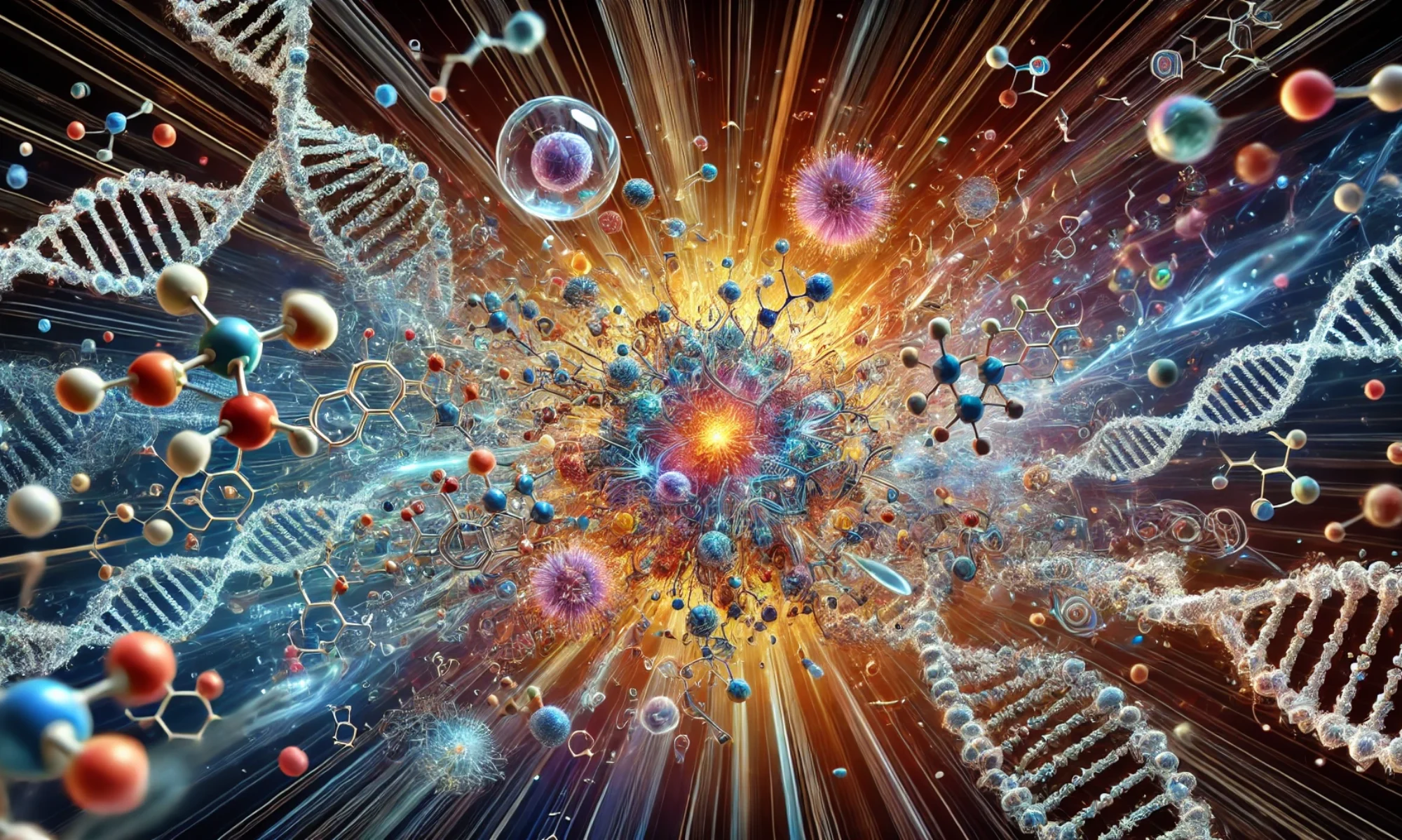
The cell: the final molecular frontier. These are the explorations of the vesicle Catalyze. Its five-year mission: to map uncharted molecular landscapes; to seek out novel biomolecular representations and emergent networks; to boldly uncover mechanisms no computation has ever characterized before!
The natural world is vast and full of wonders. Physical structures exist across at least 43 orders of magnitude in both space and time. Life itself spans a significant portion of these scales, presenting a complex mystery: How does molecular physiology—the tiny molecular machines—drive life? How do processes at the subatomic scale (10-12 m, 10-15 s) build living organisms that reach up to 103 m in size and last for 1011 seconds?
Living processes are incredibly intricate, making them difficult to measure or understand directly. In molecular physiology, we develop measurement tools, data analysis methods, and theoretical models to track biomolecular activity across scales. These range from the subatomic level (10-12 m, 10-15 s) to the cellular level (10-6 m, 103 s).
By working closely with experimental scientists, we aim to improve the resolution, scope, and efficiency of techniques used to study biomolecules. These methods include nanopore-based analysis, ultrafast vibrational spectroscopy, and FRET, among others. Progress in this field relies on designing better nanostructures and chemical processes to increase specificity and reduce errors.
Advances in fabrication and measurement go hand in hand with improvements in theoretical and computational methods. Tools such as machine learning, molecular simulations, and advanced data analysis help refine our understanding. By generating high-quality data and meaningful interpretations, we uncover fundamental principles of biomolecular function across different scales.
Further Reading
Take a look at our program page at NIST or some of the articles below:
- J. E. Elenewski, K. A. Velizhanin, & M. Zwolak, Topology, Landscapes, and Biomolecular Energy Transport, Nat. Commun. 10, 4662 (2019)
- S. Sahu, J. E. Elenewski, C. Rohmann, & M. Zwolak, Optimal transport and colossal ionic mechano-conductance in graphene crown ethers, Sci. Adv. 5, eaaw5478 (2019)
- J. E. Elenewski, K. A. Velizhanin & M. Zwolak, A spin-1 representation for dual-funnel energy landscapes » J. Chem. Phys. 149, 035101 (2018)
- S. Sahu & M. Zwolak, The golden aspect ratio for ion transport » Phys. Rev. E 98, 012404 (2018)
